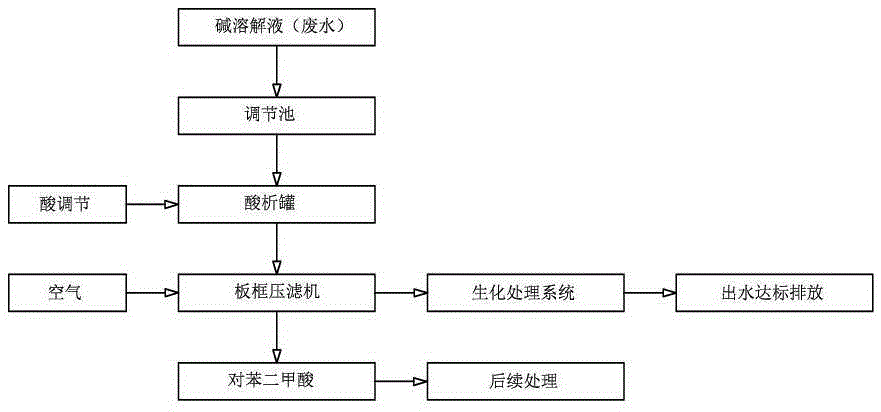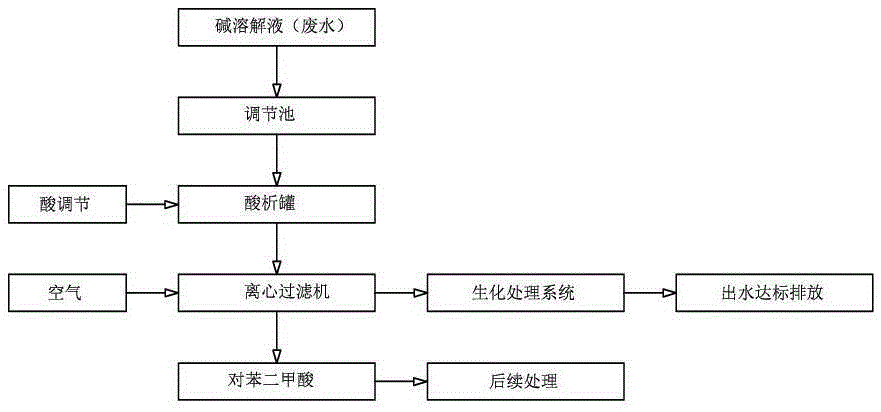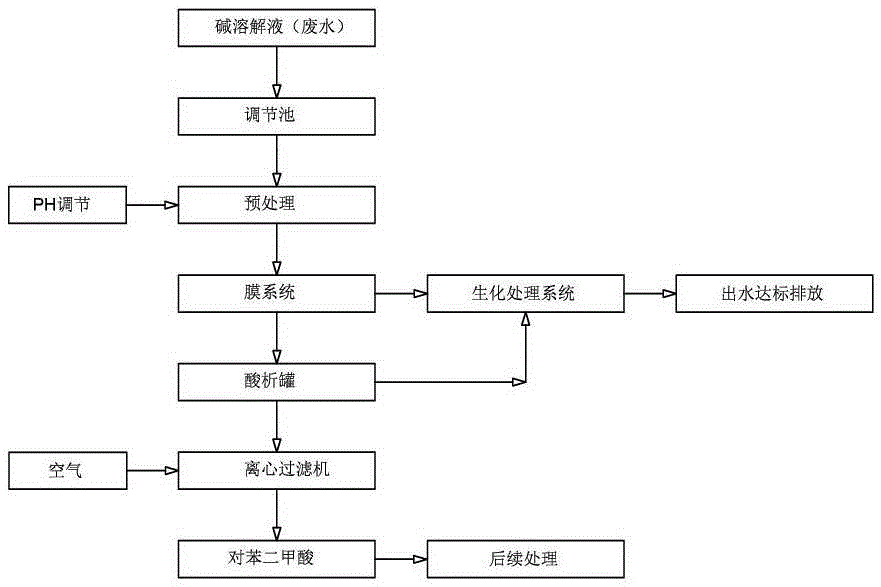Preparing method of non-twist textiles or hollow textiles or highly-branched textiles and methods for recycling solute of alkali solutions
A technology for textiles and alkali dissolution, which is applied in textile/flexible product manufacturing, textile and papermaking, equipment configuration for processing textile materials, etc., and can solve problems such as large environmental pollution, waste, and lack of productivity
- Summary
- Abstract
- Description
- Claims
- Application Information
AI Technical Summary
Problems solved by technology
Method used
Image
Examples
Embodiment 1
[0031] A method for preparing a non-twisted textile, which comprises the following process steps, specifically:
[0032] a. Preparation of alkali-degraded slices: During the polymerization of polyester raw materials, 5-sodium sulfonate-polyethylene glycol isophthalate with a total weight of 5% of the polymer and isophthalic acid with a total weight of 5% of the polymer were added. Diformic acid, beat and stir while heating to 230°C; then move to the reactor and add polyethylene glycol with a total weight of 5% of the polymer to dilute and cool down to 210°C; continue to add molecular weight to the reactor Polyethylene glycol of 6000, polyethylene glycol accounts for 5% of the total weight of the polymer, and the polyethylene glycol is added within 50 minutes while stirring, and the temperature is raised to 230 ° C under normal pressure and the mixture is kept under vacuum Polymerization, after polymerization, the alkali-degraded slices are cast, cooled, pelletized, dried, and ...
Embodiment 2
[0039] A method for preparing hollow textiles, which includes the following process steps, specifically:
[0040] a. Preparation of alkali-degraded slices: During the polymerization of polyester raw materials, add 5-sodium sulfonate-polyethylene glycol isophthalate with a total weight of 4% of the polymer and isophthalic acid with a total weight of 3% of the polymer. Diformic acid, beat and stir while heating to 230°C; then move to the reactor and add polyethylene glycol with a total weight of 5% of the polymer to dilute and cool down to 210°C; continue to add molecular weight to the reactor Polyethylene glycol of 6000, polyethylene glycol accounts for 3% of the total weight of the polymer, the polyethylene glycol is added within 50 minutes and stirred at the same time, the temperature is raised to 230 ° C under normal pressure and the mixture is kept under vacuum Polymerization, after polymerization, the alkali-degraded slices are cast, cooled, pelletized, dried, and screened...
Embodiment 3
[0053] The preparation method of hyperbranched textile, it comprises the following processing steps, specifically:
[0054] a. Preparation of alkali-degraded slices: During the polymerization of polyester raw materials, 5-sodium sulfonate-polyethylene glycol isophthalate with a total weight of 3% of the polymer and isophthalic acid with a total weight of 4% of the polymer were added. Diformic acid, beat and stir while heating to 230°C; then move to the reactor and add polyethylene glycol with a total weight of 3% of the polymer to dilute and cool down to 210°C; continue to add molecular weight to the reactor Polyethylene glycol of 6000, polyethylene glycol accounts for 2% of the total weight of the polymer, the polyethylene glycol is added within 50 minutes and stirred at the same time, the temperature is raised to 230 °C under normal pressure and the mixture is kept under vacuum Polymerization, after polymerization, the alkali-degraded slices are cast, cooled, pelletized, dri...
PUM
| Property | Measurement | Unit |
|---|---|---|
| strength | aaaaa | aaaaa |
| strength | aaaaa | aaaaa |
Abstract
Description
Claims
Application Information
 Login to View More
Login to View More - R&D
- Intellectual Property
- Life Sciences
- Materials
- Tech Scout
- Unparalleled Data Quality
- Higher Quality Content
- 60% Fewer Hallucinations
Browse by: Latest US Patents, China's latest patents, Technical Efficacy Thesaurus, Application Domain, Technology Topic, Popular Technical Reports.
© 2025 PatSnap. All rights reserved.Legal|Privacy policy|Modern Slavery Act Transparency Statement|Sitemap|About US| Contact US: help@patsnap.com



